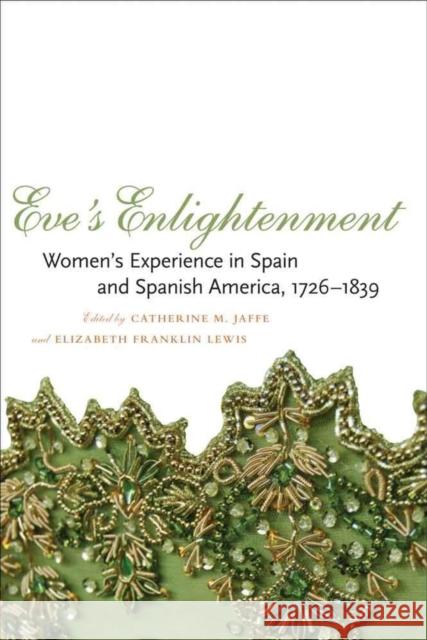Eve's Enlightenment: Women's Experience in Spain and Spanish America, 1726-1839 » książka
Eve's Enlightenment: Women's Experience in Spain and Spanish America, 1726-1839
ISBN-13: 9780807133897 / Angielski / Twarda / 2009 / 264 str.
Eve's portrayal in the Bible as a sinner and a temptress seemed to represent -- and justify -- women's inferior position in society for much of history. During the Enlightenment, women challenged these traditional gender roles by joining the public sphere as writers, intellectuals, philanthropists, artists, and patrons of the arts. Some sought to reclaim Eve by recasting her as a positive symbol of women's abilities and intellectual curiosity. In Eve's Enlightenment, leading scholars in the fields of history, art history, literature, and psychology discuss how Enlightenment philosophies compared to women's actual experiences in Spain and Spanish America during the period.
Relying on newspaper accounts, poetry, polemic, paintings, and saints' lives, this diverse group of contributors discuss how evolving legal, social, and medical norms affected Hispanic women and how art and literature portrayed them. Contributors such as historians Monica Bolufer Peruga and Maria Victoria Lopez-Cordon Cortezo, art historian Janis A. Tomlinson, and literary critic Rebecca Haidt also examine the contributions these women's experiences make to a transatlantic understanding of the Enlightenment. A common theme unites many of the essays: while Enlightenment reformers demanded rational equality for men and women, society increasingly emphasized sentiment and passion as defining characteristics of the female sex, leading to deepening contradictions. Despite clear gaps between Enlightenment ideals and women's experiences, however, the contributors agree that the women of Spain and Spanish America not only took part in the social and cultural transformations of the time but also exerted their own power and influence to help guide the Spanish-speaking world toward modernity.
The first interdisciplinary collection published in English, Eve's Enlightenment offers a wealth of information for scholars of eighteenth-century Spanish history, literature, art history, and women's studies. An introduction by editors Catherine M. Jaffe and Elizabeth Franklin Lewis provides helpful historical and contextual information."











